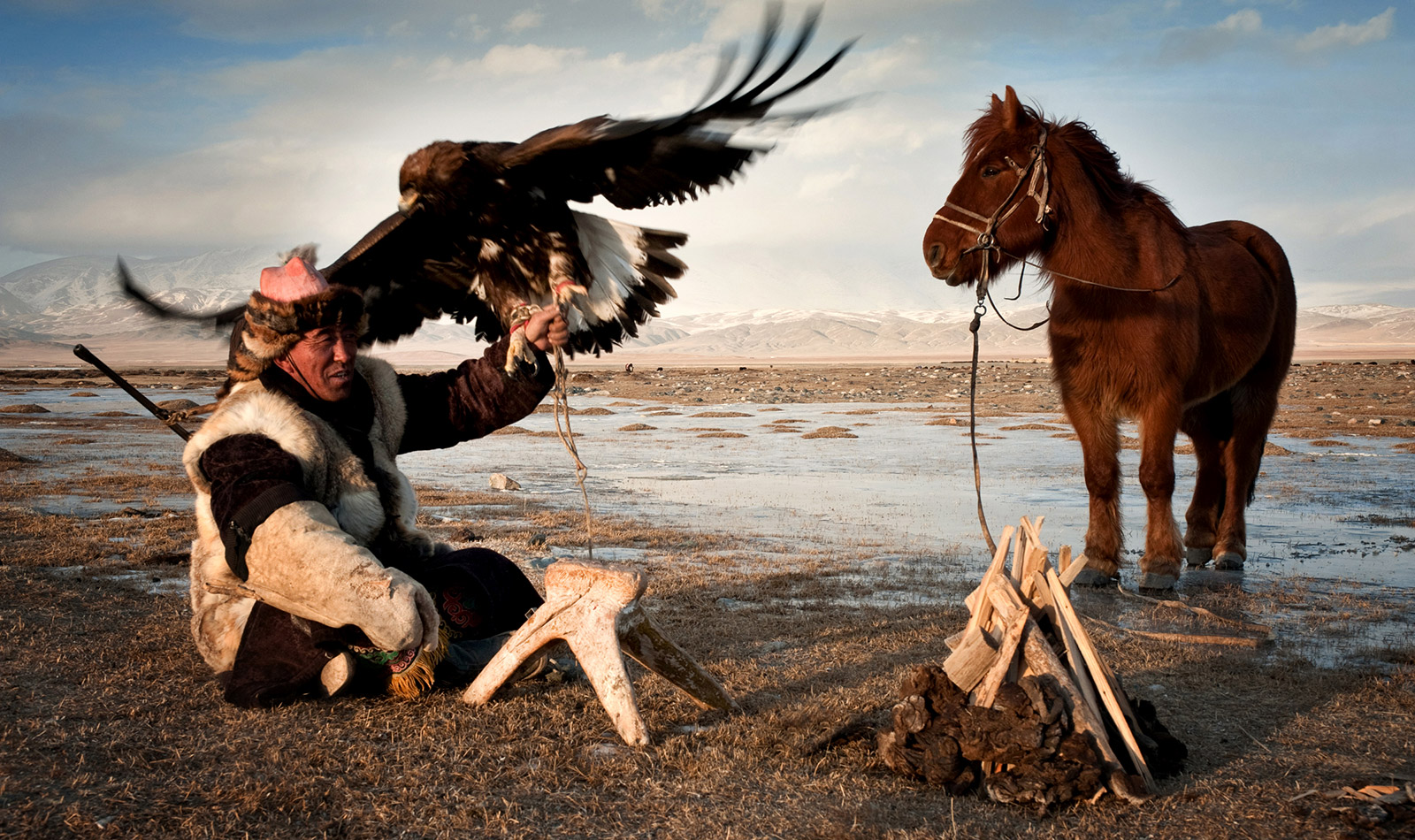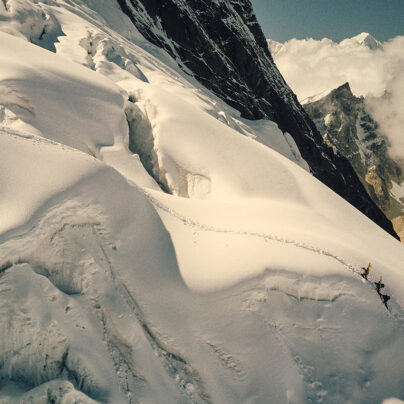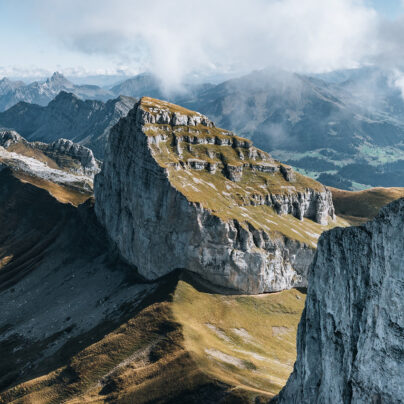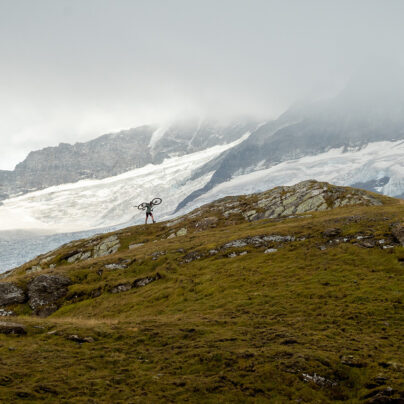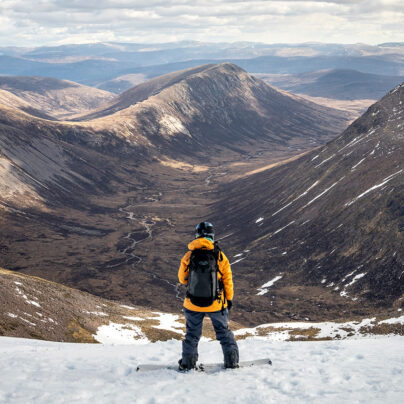The Wolf In Winter
Simon Morris
‘She has a big, brave heart,’ a concerned Sailou told me as he bent down to examine Ballipan, his beautiful golden eagle. It was the first time I had been hunting with this vibrant, 60-year-old Kazakh, out on the steppe in Western Mongolia. I had travelled all the way from Britain to experience the way these great hunters live; these men who still use the golden eagle to hunt and kill foxes, and even wolves in the winter time. The fur taken from their prey is still turned into much sought after hats, coats, and other garments.
Sailou lived in Altantsogst Soum in the Bayan Olgii Province of Western Mongolia and getting to his tiny house was an ordeal in itself. It meant leaving the windswept frontier town of Olgii and travelling many hours across dusty roads and frozen rivers in a battered, ancient Russian 4WD. I warmed to Sailou the moment I met him – his affable, generous attitude, coupled with his knowledge and obvious love of the eagles he trained from young, instantly impressed me. He lives with his wife and son, and the single eagle he is focusing on training at that moment. He only ever trains one eagle at a time, which resides in a small outbuilding beside his home. Most of the time Ballipan, the current incumbent, needed to be hooded in order to quieten her excitable demeanour, but she would still give off a high-pitched yelp each time she sensed his approach.
Through a Mongolian guide, Sailou explained that he had trained golden eagles for many years. He would either catch an adult bird in the wild by setting bait in the form of a rabbit, and then snaring the bird as it descended; or he would take a bird from young by climbing up to the nest. Although his son Berek does the climbing now. A captured adult eagle is the better hunter because they already know how to hunt – they are taught by their mothers from young, he told me. Eagle hunters only use the female golden eagle, rather than the male, as the female is bigger and more aggressive – perfect for hunting.
To the Kazakh hunter his eagle is far more than a tool for hunting in the winter months, it is part of his family and to be loved and cared for. Over the next few days I questioned him about many aspects of hunting with eagles over tasty platters of beef, lamb and horse, and he never tired of answering my sometimes incessant questions. The importance of the golden eagle to the way of life of the Kazakh hunters was really brought home to me on my first day hunting out on the frozen steppe.
To the Kazakh hunter his eagle is far more than a tool for hunting in the winter months, it is part of his family and to be loved and cared for.


After barely fifteen minutes my hands were cold, even with thick gloves on, as I stood on the mountain with Sailou and his eagle, scanning the terrain below.
We rose early to hunt and the weather was as expected: bitterly cold, around 15 degrees below zero. I was both excited and apprehensive about riding a horse for the first time, especially across this frozen terrain. The ground looked harder than iron and fall might result in considerable injury. But to my relief, our Mongolian guide, who had been lying on his back warming up the underside of the engine with a ‘blower’ because the oil had frozen solid, declared that we could drive to the hunting ground. This is usually a high mountain or other elevated vantage point from which the eagle can scan the landscape. I thought it must be a bizarre sight as we set out, I in the back of the vehicle huddled tight next to Sailou, who had his hooded golden eagle resting in his lap and oblivious of her surroundings.
After barely fifteen minutes my hands were cold, even with thick gloves on, as I stood on the mountain with Sailou and his eagle, scanning the terrain below. On one hand, Sailou wore his leathered falconry glove, but on his bare and gnarly other, he wore nothing. I was stunned, to say the least. These are hardy people, well-used to the harsh environment in which they must survive.
We gradually we began to hear the shouts and noise of the beater making his way around that frozen terrain, trying to disturb concealed prey. Sailou cried out and pointed toward the lower part of the mountain, a particularly rocky place with sharp outcrops gradually subsiding before it met the floor of steppe. I was expecting to see a fox rush from cover, but to my astonishment I recognised that fleeing blur as a tawny coloured wolf.

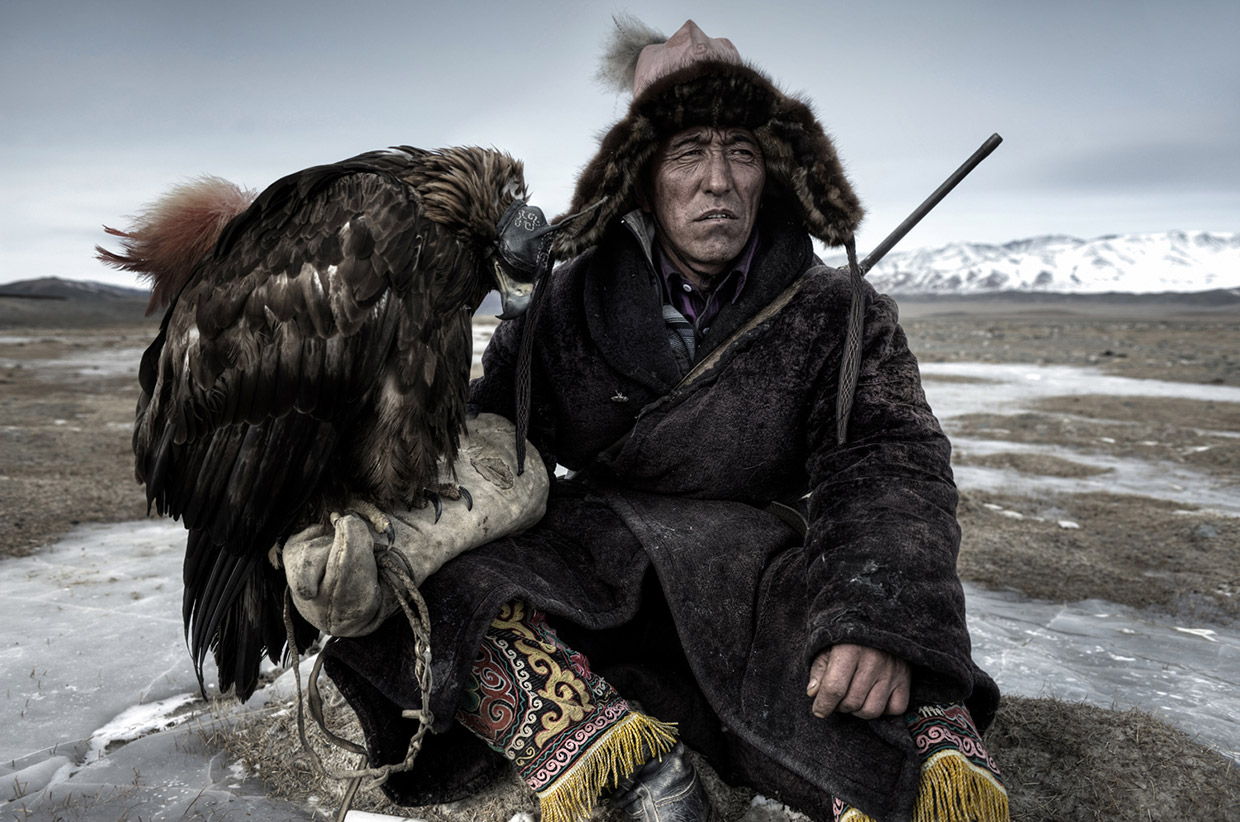
Without hesitation, Sailou removed Ballipan’s leather hood and instantly the eagle spotted the fleeing wolf, took flight, and gave chase. Seeing her dive down that mountain like a golden spear was one of the most breathtaking and raw natural displays I have ever witnessed. The eagle reached the wolf within seconds, but the wily survivor must have sensed danger coming because it turned sharply and snapped at Ballipan just as the eagle was ready to shear the wolf with her talons. Ballipan circled swiftly and dived again, but again the wolf snapped and fought back. From our elevated position on the mountain we lost sight of both as Sailou and myself scrambled, slipped, and tumbled down the rocky scree. Although Sailou was at least 20 years my senior, he left me standing as he swiftly made his way to his eagle with obvious concern written across his face. I later realised this was because a single eagle could not hope to kill an adult wolf; in fact, Sailou later told me, it takes a minimum of two, fully-grown eagles to bring down a wolf.
It took us a while to reach the bottom of the mountain, but to our relief Ballipan was resting on a nearby rocky outcrop, mewing loudly. Sailou examined her and found a gash or her foot just above her talons. He explained that when eagles go in for the kill, they take prey by the head. The wolf had bitten her on the foot, but it was not bad and would heal without a problem. Few eagles would have entertained an attack on a fully grown wolf, but Sailou said, with much warmth and pride, that his Ballipan was different. Big brave heart indeed.
Simon Morris has been an award-winning travel photographer for a decade and has travelled far and wide to fuel his love of both travelling and taking pictures that tell stories. At present his appetite is for taking pictures in extremely cold regions. In the winter of 2014 he lived with the Nenet reindeer herders in the Siberian Yamal region, in temperatures regularly below –45 degrees.
Website: simontravelphotographer.com



